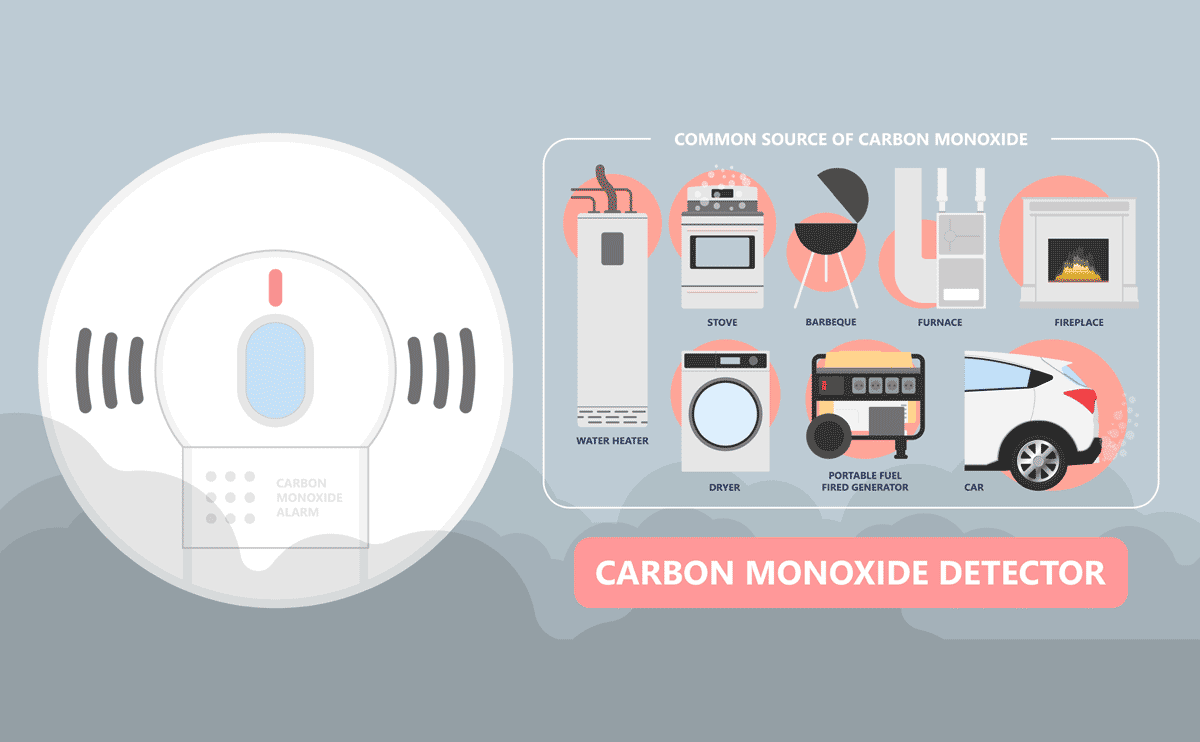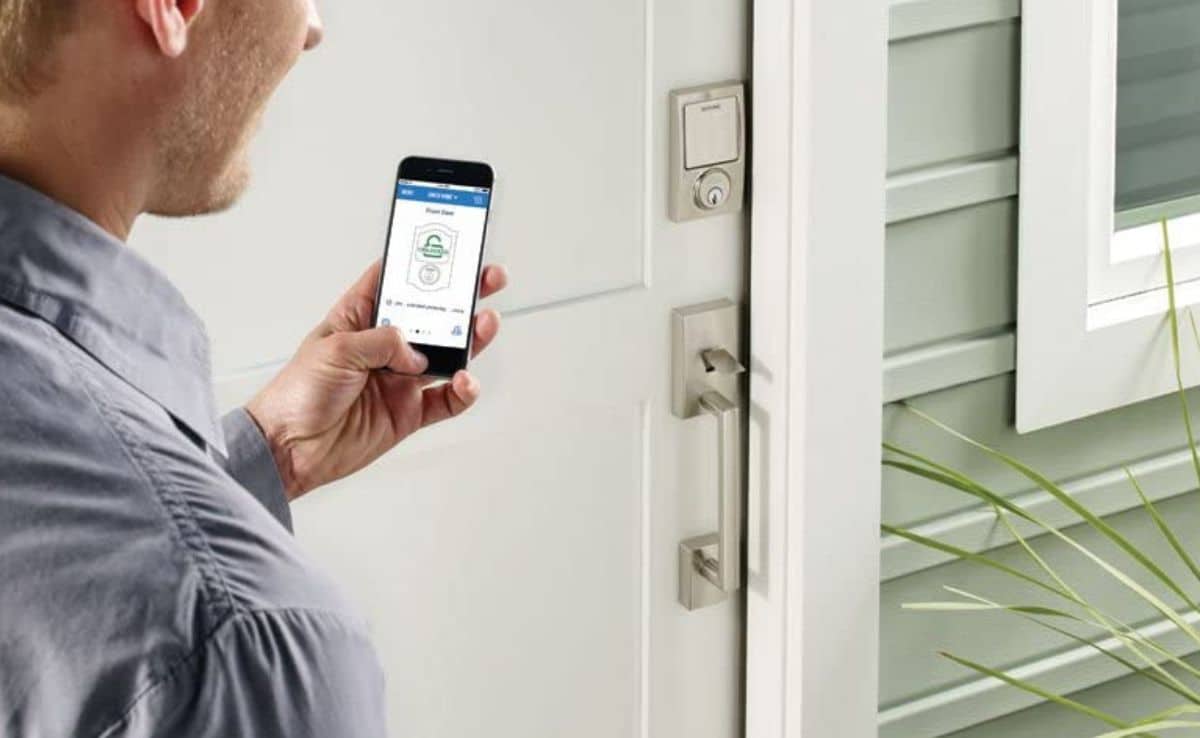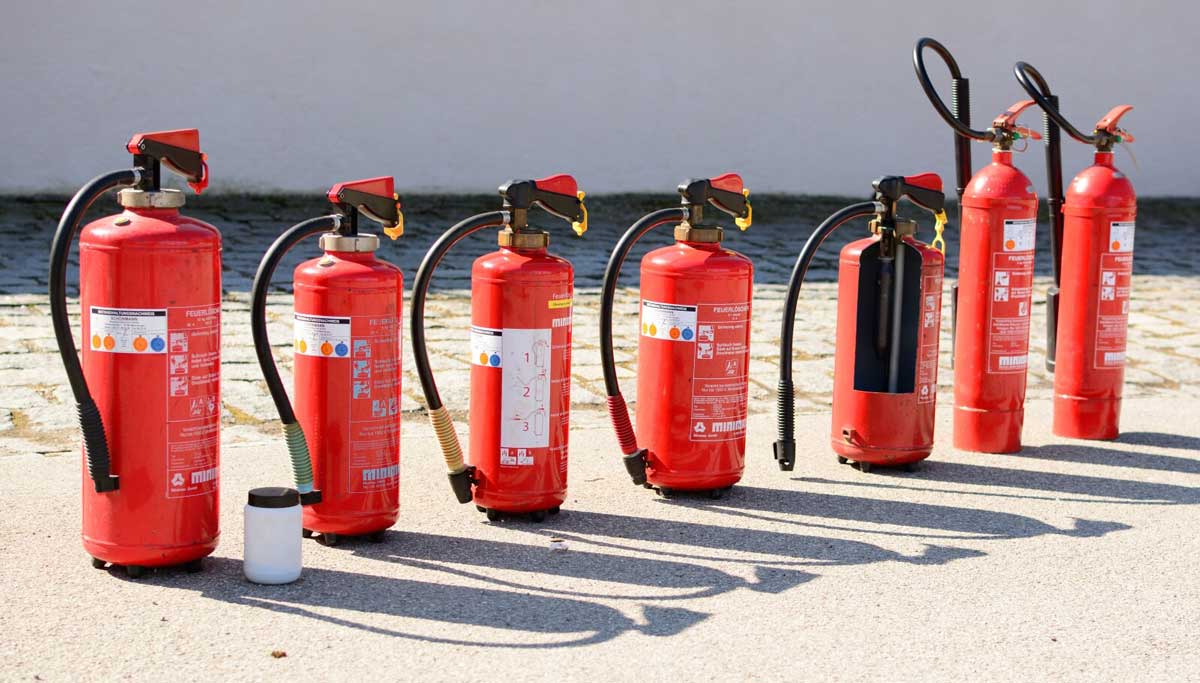Best Carbon Monoxide Detector In 2024: Kidde vs First Alert vs Nest & More
When you purchase through links on our site, we may earn a commission. Here’s how it works.

Carbon monoxide (CO) is considered a silent killer because it is an odorless, colorless, tasteless gas. There’s one way to protect your family from carbon monoxide and that’s getting detectors installed in your home. Installation is simple, and the price is relatively inexpensive considering it could save your family’s lives.
Carbon Monoxide Detector Placement
Below are some places you should put a CO detector according to the NFPA (National Fire Protection Association):
- Each level of your home
- Central location outside of sleeping areas
- Placement and mounting height should follow the manufacturer’s instructions
Most CO detector manufacturers also seem to agree that the devices should be placed 5-20 feet from the source of carbon monoxide (i.e., furnace, water heater, fireplace, etc.), and not near a window or door. You should also consider a carbon monoxide detector for your car.
Be sure to test these alarms every month and remember to change the batteries in your CO detectors. Many news outlets recommend changing your batteries when you turn your clocks back or forward for daylight savings time.
Mark Your Detectors With Replacement Dates
Label or mark the outside of your smoke and other detectors with the battery type(s) and last replacement date so you can easily reference each device (without having to disassemble or remember when you last changed the battery). We also recommend keeping extra batteries on hand for when they are low or need replacing. No one wants to listen to that annoying chirping sound.
Carbon Monoxide Detector Reviews
Now that you know the basics of why you need a CO detector and where to place them, read on to learn about the best carbon monoxide alarms and which is the best fit for your home. We took into consideration user reviews, product pros, and cons, carbon monoxide detector ratings as well as pricing.
Winner: Kidde Battery-Operated Carbon Monoxide Alarm Review
This Kidde battery-operated CO alarm is our #1 pick for best CO detector. The CO reading updates every 15 seconds. A green light flashes every 30 seconds to show the alarm is operating properly.
If a red LED appears, it means CO has been detected or the CO has been eliminated. This detector is free-standing which means it can be mounted on a wall or placed on a tabletop.
This alarm is suitable for any living area.
| Pros | Cons |
|---|---|
|
|
Pricing
Read Our Full Kidde Carbon Monoxide Detector Review
Runner-Up: Kidde Nighthawk Plug-In Carbon Monoxide Alarm Review
Our #2 pick for best CO detector is the Kidde Nighthawk. It has a digital display and comes with a six-foot extension cord attachment to allow for three mounting options: plugin, mount on a wall, or place on a tabletop.
This CO alarm fits into a standard outlet so that it can be placed anywhere in your home. The plug can be rotated, so the alarm is vertical or horizontal depending on how the socket is mounted. The blinking dot in the lower right corner denotes normal operation. As long as you see the blinking dot, your family is safe from the silent killer.
Why isn’t it our #1 pick? This alarm must be plugged into an outlet, which means mounting is limited or you’ll have an extension cord running from the detector to the outlet. It also means that the battery backup is critical since this won’t work without batteries during a power outage.
| Pros | Cons |
|---|---|
|
|
Pricing
3rd Place: First Alert Carbon Monoxide Alarm Review
Rounding out our top three is this First Alert CO Alarm. Similar to our #2 pick, this detector has a six-foot extension cord to allow it to be mounted in other places besides being directly plugged into an outlet.
We consider it to be one of the best because it has excellent user feedback, similar to our top two. It also has a 7 year life expectancy.
| Pros | Cons |
|---|---|
|
|
Pricing
Read Our Full First Alert Carbon Monoxide Detector Review
Best Smoke And Carbon Monoxide Detector: Nest Protect Review
If you’re looking for a smoke and carbon monoxide alarm in one, you’ll be hard-pressed to find one better than Nest Protect. This is the only CO detector in this article that is WiFi enabled. It alerts you through your iPhone, iPad, or Android device when the battery is low or when the alarm sounds.
Depending on your preference, you can purchase a battery-operated or hardwired alarm. This detector is more expensive than our top 3, but it will save you on the cost of purchasing both smoke and CO detector and installing them separately. Having it alert you when not home could also help you save lives faster.
| Pros | Cons |
|---|---|
|
|
Pricing
Read our in-depth Review of Nest Protect
Carbon Monoxide Detector Placement Tips (Printable Infographic)

4 Ways To Prevent CO Leaks In Your Home
- Generators and grills should be used outside, away from any doors and windows.
- Do not use your oven or stovetop to heat your home.
- Remove snow and other debris from vents outside your home for the dryer, furnace, stove, and fireplace.
- Remove your vehicle from the garage completely after starting it.
Are You Sure Your CO Detectors Are Working? (Video)
Fire officials recommend replacing your CO detectors every 3-5 years. However, some alarms have a built-in end-of-life feature. Unfortunately, just because you have one of these in your home doesn’t mean it’s working. Watch the video below to see why it’s crucial to check your CO alarms.
What To Do In A CO Poisoning Emergency
- Quickly leave the area. Move to a safe location outside where you can breathe fresh air.
- Call 911 or the fire department once you are in a safe location.
- Do not re-enter the area until emergency services have arrived and told you that it’s safe to re-enter.
Don’t Forget Smoke Detectors!
Remember that CO detectors are just one way to prevent tragedy. Make sure you also have a smoke detector. Some devices, like the Nest thermostat, actually detect both smoke and CO. Read our smoke detector reviews to learn more.







